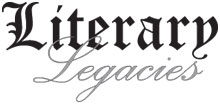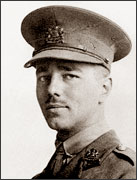Wilfred
Owen - Leading poet of the First World War

Compiled by Ishara Mudugamuwa
Wilfred Edward Salter Owen was a British poet and soldier regarded by
many as the leading poet during World War I.
He was born the eldest of four at Plas Wilmot, a house near Oswestry
in Shropshire on 18 March 1893. He was of mixed English and Welsh
ancestory. His parents were Thomas Owen and Susan.
 At that time they lived in a comfortable house owned by his
grandfather, but, on his death in 1897 the family was forced to move to
lodgings in the back straits of Birkenhead. He was educated at the
Birkenhead Technical school. At that time they lived in a comfortable house owned by his
grandfather, but, on his death in 1897 the family was forced to move to
lodgings in the back straits of Birkenhead. He was educated at the
Birkenhead Technical school.
Shortly after leaving school in 1911, Owen passed the matriculation
exam for the University of London. As Dominic Hibberd shows,Owen's own
education promised to be indentured slavery.
Already unsettled by the mixed fortunes of his family, which meant
moving house after house, Owen, with the best of intentions, was made a
probationary pupil teacher at the age of fourteen.
This meant he not only had to learn his own lessons, but also to
learn on how to teach others lessons at the same time. After two years
of this, he would then, have been obliged to teach for at least another
seven years or else stored up in dangerous pent-up energies:anger,
resentment and bitterness.
Owen was regarded by some as the leading poet of during the war,
known for his war poetry on the horrors of trench and gas warfare.
Owen's most famous poems Dulce Et Decorum Est and the Anthem for Doomed
Youth show direct results of Sansoon's influence.Owen's poetry would
eventually be more widely acclaimed than that of his mentor.
As for his poetry itself, it underwent significant changes in 1917.
As part of his therapy at Craiglockheart, Owen's doctor, Arthar Brock,
encouraged Owen to translate his experiences, specially the experiences
he relived through his dramas and poetry.
In July 1918, Owen returned to active service in France. Owen was
killed in action on 4 November 1918 during the crossing of the Sunbre
Oise Canal. He was buried at Ors Common Cemetery. There are memorials to
Wilfred Owen at Gailly Or Oswestry and the Shrewsbury.
There is also a small museum dedicated to Owen and his close friend
and mentor Sansoon at the Craiglockheart War Hospital, now a Napier
University building.
Only five of Owen's poems had been published before his death, one of
which was in a fragmentary form. His best known poems are Anthem for
Doomed Youth, Dulce Et Decorum Est, The Parable of the Old Man and The
Young and Strange Meeting. |
